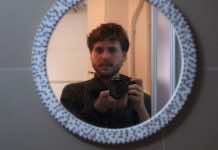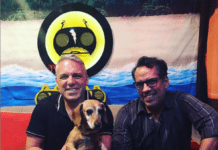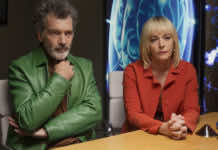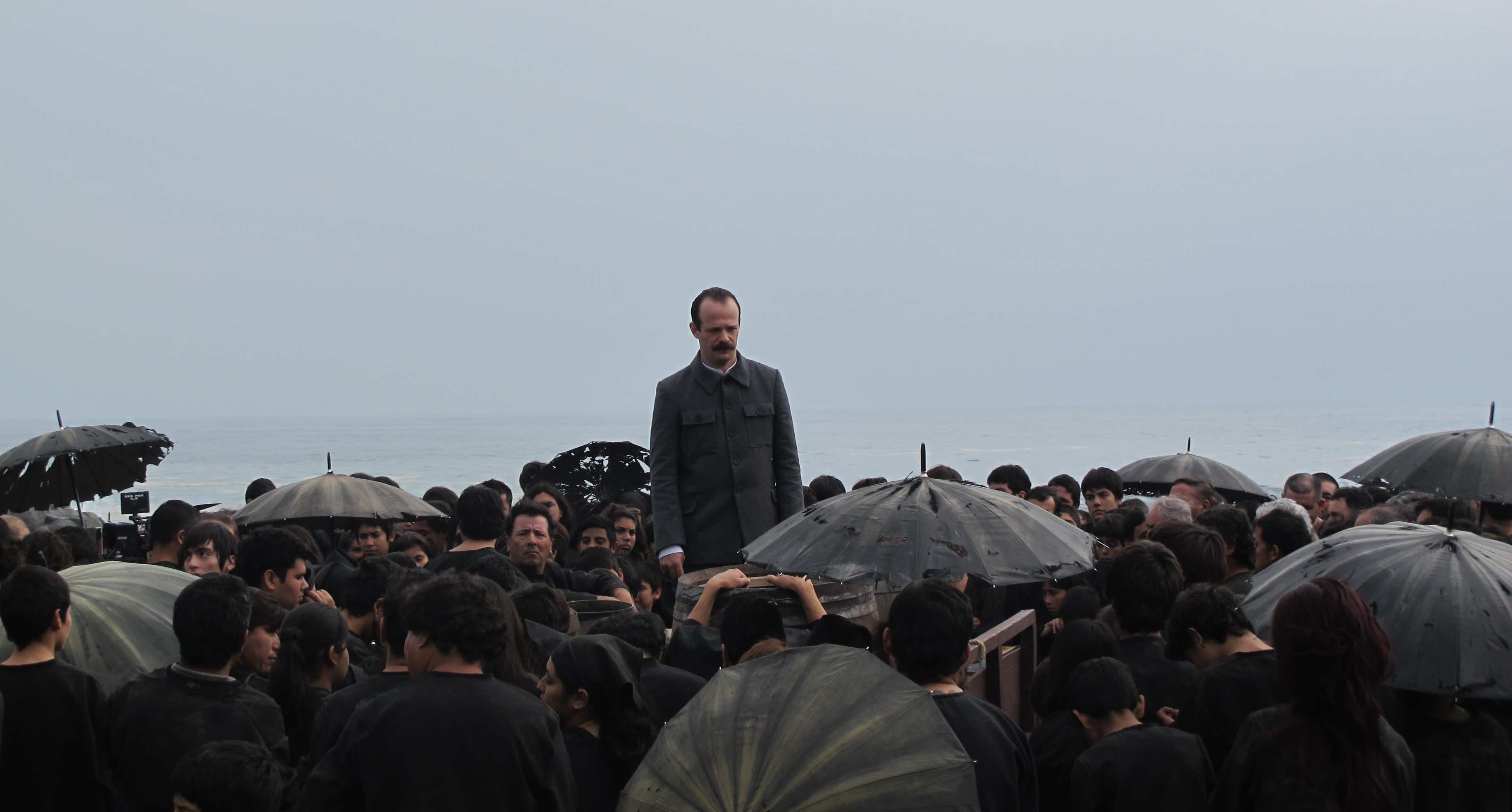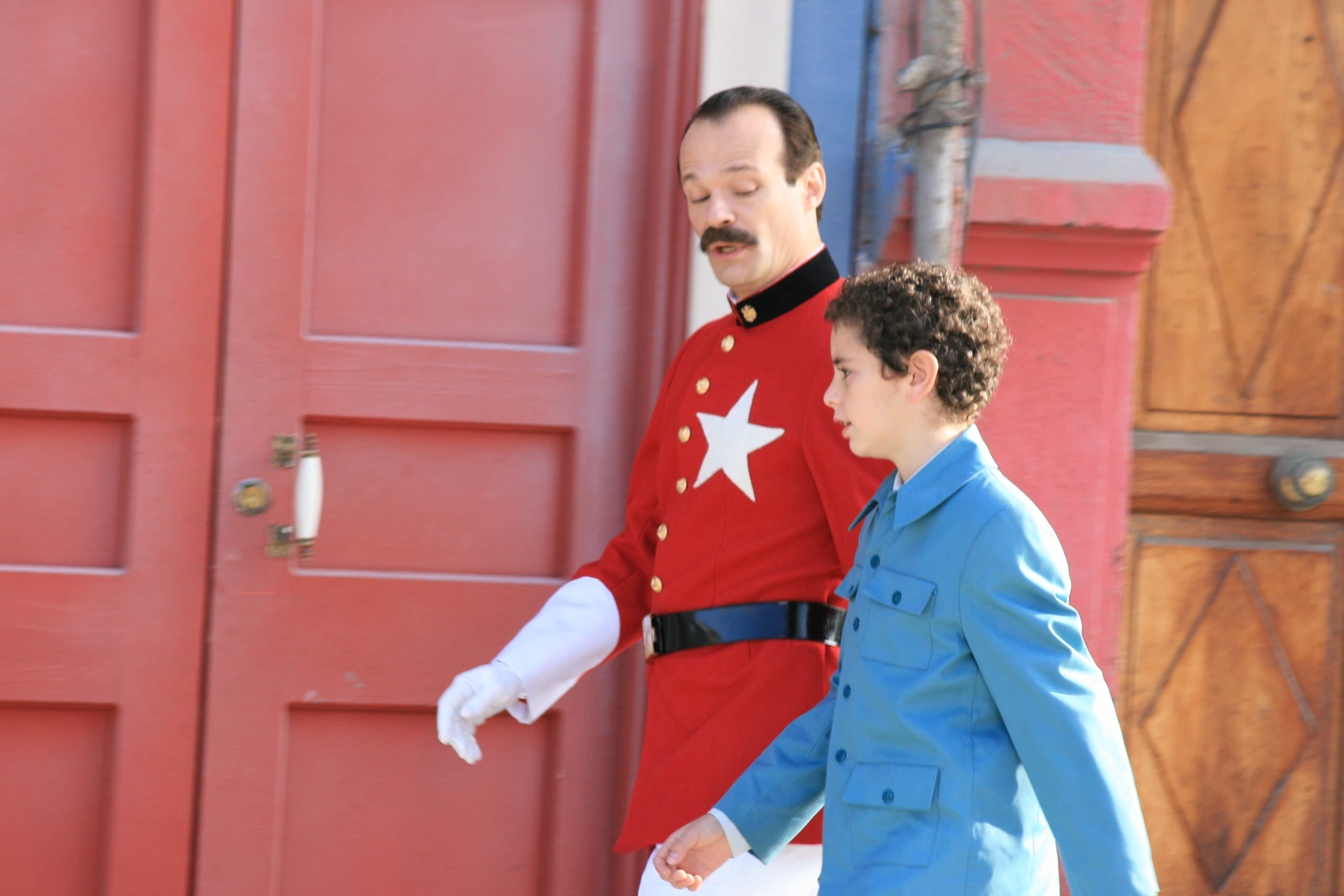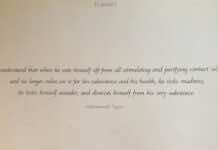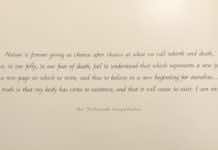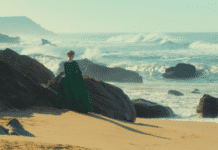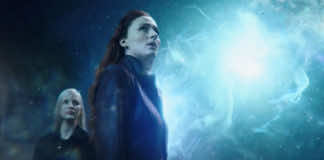Although cinema is filled with singular voices, few have the distinct style emblematic of the auteur. Alejandro Jodorowsky is one such director. After a cinematic silence that has lasted 23 years, the Chilean filmmaker has returned with the movie adaptation of his 2001 memoir, The Dance of Reality (it is only available in Spanish). He’s in every aspect of this film. Not only is he literally the author of the book that is the basis of the script of the film, he — as is often the case — plays a role in the movie. On screen, the 85-year-old appears as a version of himself to narrate the feelings and impressions of his younger self (Jeremias Herskovits) from the boy’s perspective via the filter of his older self. That may sound confusing to some, but the idea of perspective is key to appreciating his new film.
Jodorowsky has never pretended that cinema, in any remote sense, stands in as a surrogate to reality as most people know it. He fills his films with allegory, myth and fables. They are also social critiques. Some lovers of Jodorowsky like take his films at face value and marvel at the inventive imagery on a subconscious if not superficial level. Others look to the symbols for a path to enlightenment. Sometimes, a sense of the personal can be gleaned from his cinema, and no film in his career has ever felt more personal than The Dance of Reality. That said, it should also be taken with a grain of salt.
With this new film, Jodorowsky takes auteurism to familiar nuclear heights, literally speaking. Though he only plays a small but recurrent role as his current self, bedecked in either a simple black or white suit,  this film is also a family affair, as he extends his auteurism through his children. His eldest son, Brontis Jodorowsky plays Jaime Jodorowsky, the father who seems to bully his son into “manning up” in the film. Then there is Axel Jodorowsky, who plays the hermit Theosophist by the beach young Alejandro visits for some doses of enlightenment. Youngest son Adan Jodorowsky provides the film’s dynamic soundtrack and has a small role in the film as an anarchist. Finally, the director’s wife, Pascale Montandon-Jodorowsky, designed the film’s eye-catching costumes.
this film is also a family affair, as he extends his auteurism through his children. His eldest son, Brontis Jodorowsky plays Jaime Jodorowsky, the father who seems to bully his son into “manning up” in the film. Then there is Axel Jodorowsky, who plays the hermit Theosophist by the beach young Alejandro visits for some doses of enlightenment. Youngest son Adan Jodorowsky provides the film’s dynamic soundtrack and has a small role in the film as an anarchist. Finally, the director’s wife, Pascale Montandon-Jodorowsky, designed the film’s eye-catching costumes.
Raising his auteurism to a more familiar level, Jodorowsky has never played by any set of rules dictated by the norms of cinema. His films have often been called surreal and shocking. A sort of associative dream-logic moves narrative along, which actually stands as a more honest use of the filtered lens of the camera and the subjective decision of editing. Those who know Jodo as the weirdo director who made the first “midnight movie,” El Topo (1970), are reducing this genius director to a trivial novelty, which does not take into account his profound insight into the human soul via creativity. Underneath sometimes shocking images lies a well of insight into the hypocrisy of ideology, be it the kind that governs a nation or the one that defines a sense of self.
Tyranny stands out as a big part of this film. The film begins with the idea of material oppression. It’s all about money, as gold coins fill the screen as the director’s face fades in from the black background, comparing money to blood, Christ and Buddha. Clowns drop coins to the melody “The Daring Young Man on the Flying Trapeze.” Then, money cascades across a newspaper headline noting the financial collapse of 1929 (the year of the director’s birth) and the impact it had on the majority of Chileans. While the soundtrack switches to the sound of boots marching, Jodorowsky continues, “There is no difference between money and conscience.” Blood spatters the newspaper, and the director says, “There is no difference between conscience and death.” Then the film fades to an iconic Jodorowsky image: a mass of people walking through the desert.
That’s only about the first minute of the opening of the film. Already he presents an image dense with metaphor and philosophy. Intimate and adventurous, Jodorowsky has created a film filled with the surreal wit that has endeared him to his audience, but there is also a profound wisdom aware of the hypocrisy of religion and the State. Tyranny is a big thing for Jodorowsky, and it begins with an interest in materialism that seems to fuel life only to result in a futile existence without meaning.
The film then soon turns its focus to the young Jodorowsky as a lad with long, golden hair. He’s oppressed by his father who calls him “coward” and “queer” and frequently yells at him. Meanwhile, his voluptuous mother (Pamela Flores) only ever sings her dialogue in an operatic warble, referring to him as the reincarnation of her father. Oppression becomes more personal and distinctly macho and feminine. The young spirit can only flail for some sense of self, as the damaged people immediately around him project and seem to suffocate him, as they try to raise him as their only offspring.
Then there is the presence of Carlos Ibáñes (Bastián Bodenhöfer), a military officer turned dictator during two presidencies in Chile. Much of the film follows  Jaime who turns his interest away from family to stand up to Ibáñes and one day, when the moment is right, assassinate him … if not, at least kill his horse. However, when he fails to accomplish this personal mission, Jaime turns cripple and disheveled and becomes a martyred political prisoner subjected to intense torture. Could this be the path to the father’s redemption? Who knows? It’s for Jodorowsky to work out, and despite many hilarious, sometimes twisted but always resonant set pieces and scenes, this struggle for redemption carries on a bit too long, and seems too far removed from his boyhood self. It’s the one part of the film, albeit a large one, where Jodorowsky goes a bit too literal.
Jaime who turns his interest away from family to stand up to Ibáñes and one day, when the moment is right, assassinate him … if not, at least kill his horse. However, when he fails to accomplish this personal mission, Jaime turns cripple and disheveled and becomes a martyred political prisoner subjected to intense torture. Could this be the path to the father’s redemption? Who knows? It’s for Jodorowsky to work out, and despite many hilarious, sometimes twisted but always resonant set pieces and scenes, this struggle for redemption carries on a bit too long, and seems too far removed from his boyhood self. It’s the one part of the film, albeit a large one, where Jodorowsky goes a bit too literal.
What stands out best about The Dance of Reality are the scenes with his younger self. Though the child version always seems terrorized by Jaime, the older self is there to offer the boy’s thoughts. It makes for many particularly touching scenes of a different kind of redemption, a sort of self-redemption. It’s a blending of both suffering and healing and the growth that comes later. For Jodorowsky, life is not linear. It’s circular and carries on beyond time. He’s generous to extend it to his father, but it boils down to the self. In one of the director’s voice overs, he assures himself as a child, and by extension the audience: “Everything you are going to be, you already are. What you are looking for is already inside you. Rejoice your sufferings. Thanks to them, you will reach me.”
The Dance of Reality runs 130 minutes, is in Spanish with English subtitles and is not rated (though about childhood, it’s a mature man’s childhood in retrospect, so it’s not for children). It opens Friday, June 6, at 7 p.m., exclusively at the Miami Beach Cinematheque. Actor Brontis Jodorowsky will present the film in person on June 14. On June 15, he will also introduce Jodorowsky’s Dune and another film he stars in, Táu (see MBC’s calendar for details). On Tuesday, June 17, at 7 p.m., he, Village Voice film critic Michael Atkinson and Miami Herald film critic Rene Rodriguez will share the stage at MBC in the second installment of the Knight Foundation-sponsored series “Speaking In Cinema” to discuss this film and other works by Jodorowsky (see details). A meet-and-greet party at the Sagamore Hotel ends the night.
Photo credits: All images provided courtesy of Brontis Jodorowsky and were shot on set by Pascale Montandon-Jodorowsky. Brontis and I recently caught up via Skype. Expect to see a series of interviews as a result of our conversation in the next few days. In the meantime, read our early chat, when this film was still in production, and more via this link.



